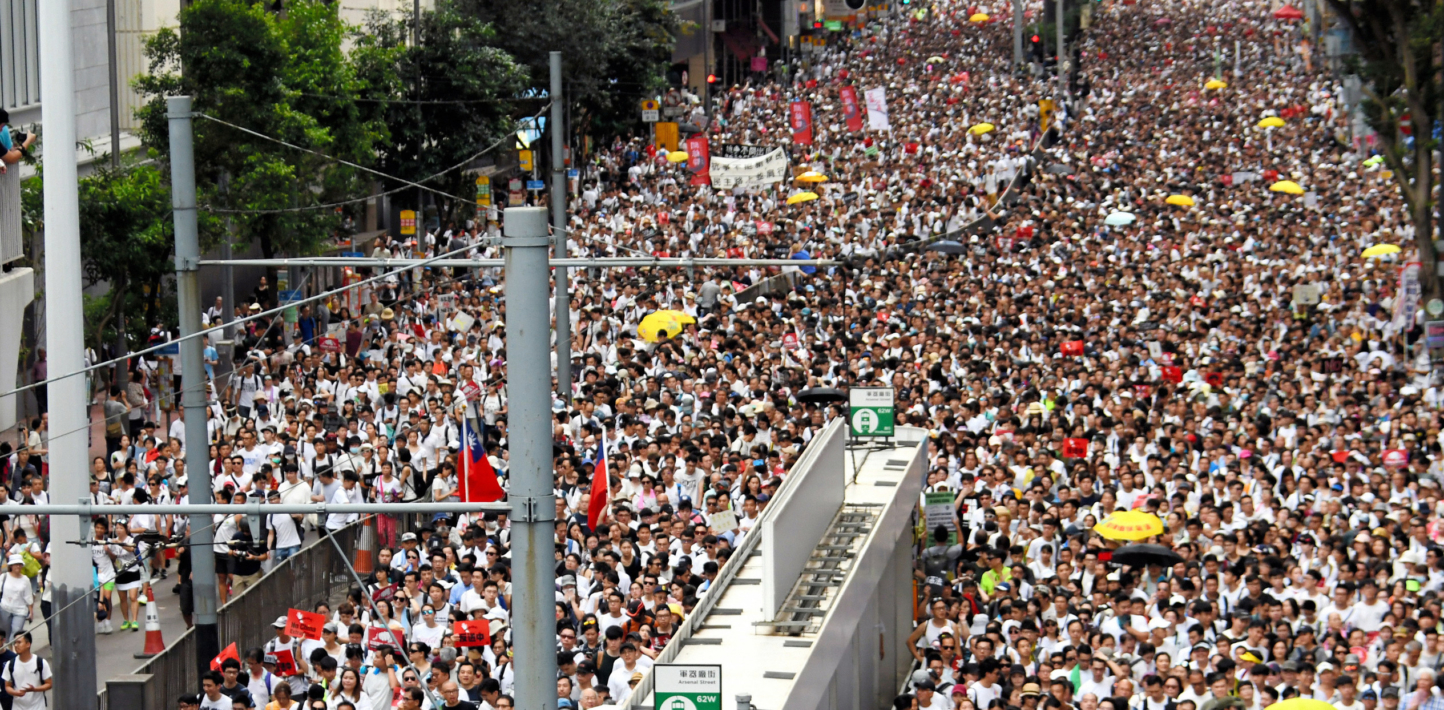By Joshua Rosenzweig, Head of Amnesty International’s China Team
It was an “I was there” moment. One million people – from children to grandparents – shrugging off the summer humidity to pack Hong Kong’s Hennessey Road and defend their city’s rights. June 9, 2019 was a day of apprehension, defiance and hope for those who took to the streets in protest against a proposed law allowing extraditions to mainland China.
But this is not how the Hong Kong authorities want you to remember it.
One year on from that record-breaking rally, the mass movement that galvanized a generation is feeling the full weight of a relentless government assault. Beatings, tear gas and gunfire have been unleashed against overwhelmingly peaceful protests over the past 12 months. Renewed demonstrations in response to a terrifying national security law proposed by Beijing are being met with a familiar heavy-handed police response.
But away from the turmoil of the streets, Hong Kong’s government is taking a more calculated approach. In addition to brute force, propaganda is the weapon it has chosen to try to crush a second successive summer of discontent before it can get going.
It was no surprise when Hong Kong’s toothless police watchdog exonerated the city’s officers of wrongdoing in a “fact-finding review” into the protests released last month. But what was more shocking was the report’s brazen confidence to rewrite history with the protesters cast as aggressors. Or, more specifically, “terrorists” hellbent on violent disruption.
It’s a trick straight out of the Chinese government’s national security playbook, where stability trumps all – including human rights – and critics are accused of threatening it. So dependable is this formula for controlling the narrative that Donald Trump is currently employing his own version of it by putting “terrorism” at the center of the debate around the Black Lives Matter protests.
And it is Hong Kong’s so-called threat of “terrorism” that has ostensibly compelled China to take matters into its own hands with a national security law that could come into force within a few months.
Detail is scant on how the law will eventually look, but this is in itself cause for concern given China’s history of using broad, vague legislation to stamp out all forms of dissent. With its denunciations of “separatism, subversion, terrorism and foreign interference”, the fear it will be used as a tool to punish supporters of the movement is profound.
The breathtaking ruthlessness of the national security law sent a jolt through the pro-democracy movement, but it is merely the latest escalation in a sustained attack on human rights in Hong Kong.
At the press conference where Hong Kong Chief Executive Carrie Lam endorsed the sham police watchdog report, the backdrop to the stage showed an image of a barricade in flames with the title: “The Truth About Hong Kong”.
The fact that some protesters resorted to violence at the height of last year’s unrest has been hyped up and weaponized by the authorities. But those protesters represent only a tiny minority compared to the number who have protested peacefully.
The government believes it needs to win this battle to drive the narrative in order to regain control – both at home and internationally. That much is clear from its recent USD $30 million investment in a global branding campaign that purports to champion the city’s freedoms and its success in rooting out the violent minority portrayed as perpetrating the 2019 “riots”.
Yet, for all the government’s efforts to obliterate it, Hong Kong’s protest movement is far from beaten.
During the months that COVID-19 kept activists off the streets, the protests evolved into everyday resistance. The best example is the booming “Yellow Economic Circle”, which has encouraged people to patronize local businesses that support the protests – yellow being the colour adopted by the movement.
Now, people are tentatively returning to the streets amid an improving public health situation and despite ongoing social distancing measures that have at times been used to thwart them. The vast majority remain peaceful – just as they were on Hennessey Road a year ago.
The protesters’ creativity and resilience makes it almost impossible for the government to silence them. But rather than listening to their demands, it has dug in its heels for an increasingly bitter struggle against the enemy it created.
Yet, as peaceful protesters young and old continue to speak out, singing songs and chanting slogans, it is disingenuous to frame this movement as a menace to the city. The protests have never been about bringing down Hong Kong; they are about trying to save it.
This article was originally published by the Hong Kong Free Press


